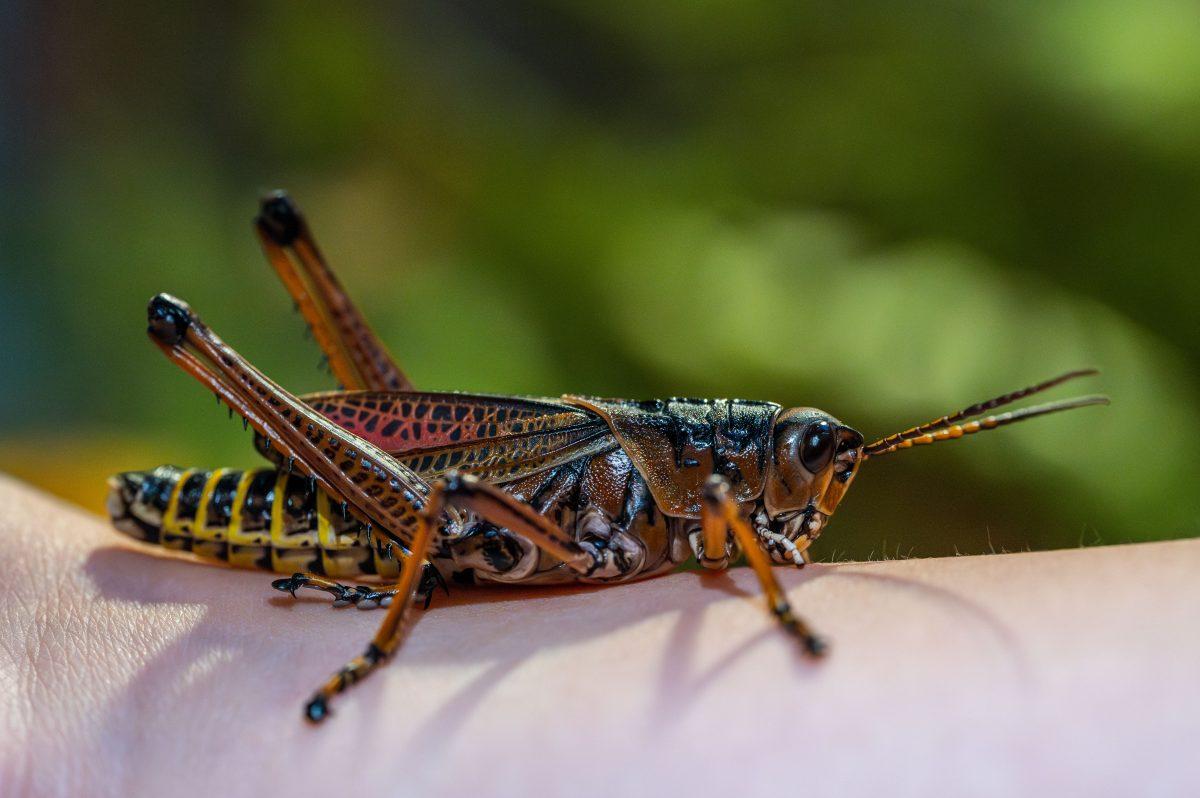From cockroach races and bug-infused foods to live arthropod specimens, the North Carolina Museum of Natural Sciences hosted its annual Bugfest on Saturday, which featured a variety of bug-themed activities for approximately 30,000 attendees.
With the museum’s close proximity to NC State, it’s no surprise that the Wolfpack also had a presence among the crowds. At least four NC State groups had exhibits at the event, and many more students volunteered and attended.
Bugfest started in 1993 as an offshoot of a Native American festival hosted by the NC Museum of Natural Sciences. Kari Wouk, the head of public science events for the museum and one of the three coordinators for Bugfest, said the festival started with trail mix.
“Somebody made a buggy trail mix because, of course, bugs would have been an important source of food, and the line for that was massive,” Wouk said. “And so my predecessor here at the museum … was like we should do an event just on this. And then Bugfest was born.”
One of Bugfest’s main attractions is its Cafe Insecta, which features samples from local food trucks and restaurants of bug-filled foods. This year’s cafe showcased eight Raleigh businesses, with offerings such as Bugnana Pudding, Kickin’ Cricket Chicken Salad and Mealworm Cake Pops.
Multiple NC State entomology groups tabled for the event. Regan Daniels, a second-year graduate student studying entomology, exhibited with the Reiskind Lab, which focuses on studying mosquitoes and ticks and their impact as disease vectors on public health. Their booth, “The Vampires in Our Backyard: Ticks, Mosquitoes and Other Blood Suckers,” educated attendees with live mosquito specimens.
“I love getting the chance to explain and help people understand and respect the creepy crawlies and the nasties and the things that people typically don’t like,” Daniels said. “I study ticks, so I’m very adamant about … helping dispel a lot of myths on ticks and teaching people the proper way to care about ticks and getting rid of them and their diseases.”
Courtney Johnson, a first-year doctoral student in forestry and entomology, exhibited with the Forest Health Lab.
“We study forest insects that eat trees, basically, so most of what we do is on invasive pests that kind of ended up in the United States accidentally through trade,” Johnson said. “They can spread really quickly and decimate your trees.”
While Bugfest succeeds in making bugs fun with crafts and live demonstrations, it also works to educate the public about insects and the role they play in our larger ecosystem. Conservation is a major part of the NC Museum of Natural Sciences’ mission in hosting Bugfest year after year.
“The museum’s mission is to illuminate the natural world and inspire its conservation,” Wouk said. “What I like is for people to come and learn about spiders or learn about other bugs and do something, take an action to help bugs in their life. … That’s my favorite part: feeling that we really are making an impact, that people actually are coming in and learning about arthropods and caring about them.”
Bugfest has something for everyone, but the event specifically draws children and families. Daniels and Johnson both said they enjoyed getting to interact with kids and educate them on arthropods and their impact on the environment.
“My favorite part is definitely just teaching about what I’m passionate about because I love talking about this stuff,” Johnson said. “I can talk about it all day. So I love talking to the kids and teaching them.”
Daniels said it was particularly uplifting to see families interested in bugs.
“I think my favorite part has been all of the parents that are super willing to let their children learn about these certain things and … supporting them in these weird sciences,” Daniels said. “I think seeing that … makes me really hopeful for the future generation of scientists.”
With over 100 exhibits, 1,000 volunteers and tens of thousands of attendees, the NC Museum of Natural Sciences certainly succeeded this year in its mission to educate on and encourage conservation of creepy crawlies.








